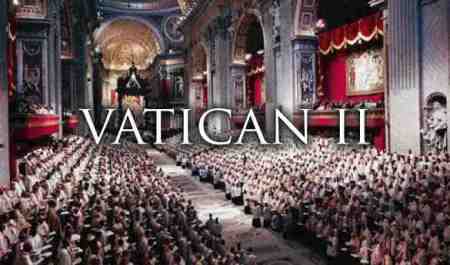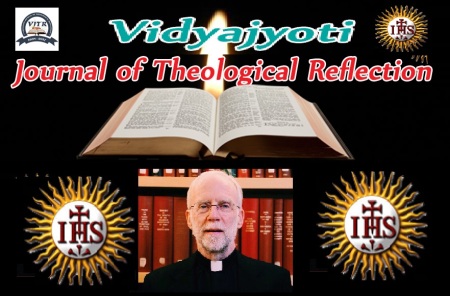When the Europeans started “Krishna or Christ” assertions, Indians changed to “Christ and Krishna” surrenders! [1]

Introduction – Myth of Thomas linked with Christ and floated in India: After 1980s, the English speaking elite Indians and Hindus knowingly or unknowingly involved in the comparison of “Krishna and Christ.” In their Vaishnavite approach to the inter-religious dialogue, the Christian adapted and adopted such myths to rouse the passion of devout Hindus at one side and beat them at the other side declaring that Krishna was Christ! As for as Tamilnadu and Madras / Chennai are concerned, such groups cleverly worked and created rapport with the Vaishnavites of Chennai and Sri Rangam. Francis Xavious Clooney has been the major role played and still playing with the Vaishnavite professors, exerts and bigwigs like M. A. Anathakrishnan, Kannan, V.K.S.N.Raghavan, Velukkudi Krishnan, Agnihotram Ramanujachariyar, Booma Gopalan, and others.

vatican council II
The cultural and archaeological exhibition titled ‘Enchanting Krishna’ (August 2010): T.K.V. Rajan, Editor, The Indian Science Monitor, who organised the exhibition, said several principles preached in the Gita were prescribed as a subject in modern-day business management studies. The objective of the exhibition was to correlate Harappan sites with that of Mahabharata sites in the country. A four-day cultural and archaeological exhibition titled ‘Enchanting Krishna’ was inaugurated here on Monday. Aug. 30, 2010. The exhibition was open between 11 a.m. and 8 p.m. at Madurai Meenakshi Bhavan Hotel Complex, G.N. Chetty Road, near Vani Mahal, till Thursday[1]. Speaking after the inauguration, Prince of Arcot Nawab Mohammed Abdul Ali said all religions preached tolerance and brotherhood. Indians were a peace-loving community and the Muslims in India were happy unlike their brethren in neighbouring countries, he said. His ancestors lived a harmonious life with members of other community. This was evident by their generous donation of large areas of lands for constructing more than 300 temples in southern India as well as educational institutions by Christian missionaries[2]. One should live to the ideals of Bhagavat Gita, which was given to humanity by Lord Krishna, said Rev. Fr. B. Jeyaraj, S.J., Principal, Loyola College[3]. Whatever was required for human beings had been mentioned in the Gita, he said[4]. It is not known as to TKV Rajan knew the agenda of Vatican Council-II or not.

Exhibition on the scientific discoveries on Christ and Krishna (Februrary 2012): When TKV Rajan organized an exhibition on “Christ and Krishna,” the Times of India reported in this way[5] – “While the Western world has been doing cutting edge research on Jesus Christ and the Bible, India lags far behind in tracing the legacy, life and times of its kings and heroes, feel archaeologists”. Scientists have discovered the sunken city of Dwaraka, but Krishna still remains more of a mythological figure, they add, mostly because of lack of manpower and funds. “We should start treating our epics as history, not legends. There is enough scientific evidence for this, and a lot more needs to be done,” says T K V Rajan, an archaeologist now organizing an exhibition on the scientific discoveries on Christ and Krishna at Parvati Art Gallery on Eldams Road[6]. “We hardly try connecting our finds to our epics. We find a pot, tank or inscription, but we do not bother to join the dots,” says Rajan.

Archaeologists and ocean scientists made a sensational discovery of Dwaraka under the Gulf of Khambat in 2001 and of coins with imprints of Lord Krishna and Balarama, issued by an Indo Greek king in Afghanistan. But precious little was done as follow-up. “Archeologists in Europe have traced the precise spot of Jesus’s birth, St Peter’s house visited by Jesus, boats used during his time, his crucifix and even skeletons of giants who existed before the reign of King David. On the other hand, Hastinapur excavated in 1952, has not been touched again. There is so much to study in Kurukshetra and Mathura,” says Rajan. Dr T Sathyamoorthy, the former superintending archaeologist with the Archaeological Survey of India, says there is scarce interest in the subject. “In the south, there is virtually no college that offers archaeology as a subject or course. Not many people come for excavations. The northern states are slightly better, but most of the archaeologists don’t study the epics deeply enough,” says Sathyamoorthy. Dr R Nagaswamy, former director of the state department of archaeology, says while Puranas are treated as legends, the Bible is taught as history, with dates. “Now we can trace Lord Krishna back to 1700BC, but we don’t have many people studying epics and Puranas with a chronological sense,” he says.

Many sites belonging to Mahabharata unearthed (December 2008): T K V Rajan, archaeologist and founder-director, Indian Science Monitor, who is holding a five-day exhibition, on search of Lord Krishna,’ in the city from Saturday, December 28, 2008, gave these details:
- The conch and the Sudarshana Chakra are unmistakable. Although the figures do not match popular images of Kirshna sporting a peacock feather, archaeologists are convinced that the coins are of Krishna, revered as an avatar of Vishnu.
- “These square coins, dating back to 180- BC, with Krishna on one side and Balram on the other, were unearthed recently in Al Khanoun in Afghanistan and are the earliest proof that Krishna was venerated as a god, and that the worship had spread beyond the Mathura region,” says
- Having done extensive research in Brindavan, Rajan is convinced that a lot of the spiritual history of ancient India lies buried. “Close to 10,000 Greeks, who came in the wake of Alexander the Great, were Krishna’s devotees. There is an inscription by Heliodorus, the Greek ambassador at Takshila, which reads Deva, deva, Vasudeva. Krishna is my god and I have installed this Garuda Pillar at Bes Nagar (now in Bihar),‘” says Rajan.
- According to him the Archaeological Survey of India (ASI) has unearthed many sites that throw fresh light on the era of Krishna. “ASI is expected to release the full findings next year. Many of the unearthed artifacts have a close resemblance to materials of what is believed to be the Harappan civilisation. The findings may show that Krishna’s life was the dividing line between India’s spiritual history and the society’s gradual shift towards a materialistic one,” says Rajan.
- Interestingly, a lot of what has been uncovered closely resemble the narration in the texts of Mahabharatha and the Bhagavatham,” he adds. Both the spiritual works are revered by the Hindus as their holy books.
- It has been over five years since the discoveries were made at Tholavira near Dwaraka, close to Kutch.
- Much progress has been made due to the application of thermoluminous study (TL) in ascertaining the age of the artifact. “It is possible to get the diffusion of atomic particles in the clay pottery unearthed and arrive at an accurate date,” points out Rajan. Tholavira itself is believed to be the capital city as detailed in the opening chapters of Bhagavatham[7].
- Rajan points to an image of a plough, made of wood, which is mentioned in the Bhagavatham[8].
- The findings could lay a trail to understanding Krishna’s life (said to be 5,000 years ago) and times, as a historical fact, says Rajan.
The exhibition will be open till December 31 at Sri Parvathy Gallery, Eldams Road. Here, it may be noted that already done work, published books, much-discussed coins and inscriptions for the last 50-100 years, are taken by him and assertions made as mentioned above, creating an impression as if he did all the work.

Supporting Aryan-Dravidian race theories: Ironically, in other U-tube talks, he believes in pseudo-scientific, discarded race theories, and thus argues for Dravidians, accepting Aryan race. He takes pro-Tamil stance also. Yet, he bats for “Akhanda Bharat” and “Christ.” Even Romila Thapar has accepted that the race theories are unscientific and no historian believes in race. The UN passed a resolution that the word race should not be used. However, Rajan uses such expression in Tamil and interprets the linguistic processes in the racial connotation. Therefore, it is not known what has made him to contradict, and continue to lecture such mythical and unhistorical narratives under the guise of archaeology and so on. More surprise has been that such video talks have been prepared by the Pande company. Anyway, if the disown historical claims, t= let them enjoy such funs.
© Vedaprakash
23-06-2020

[1] The Hindu, Indians, a peace-loving community: Prince of Arcot, SPECIAL CORRESPONDENTCHENNAI:, AUGUST 30, 2010 23:26 IST, UPDATED: AUGUST 30, 2010 23:26 IST.
[2] It is a myth that Mohammedans granted lands to build temples and all, because, as putsiders, invaders or even converttef categories, they could not do that as per Quran. Therefore, it is a blatant lie and he has been telling this in most of the platforms. The land of India belong to Indian, Hindus.
[3] https://www.thehindu.com/news/national/tamil-nadu/Indians-a-peace-loving-community-Prince-of-Arcot/article16150885.ece
[4] Under the “Inculturation” programme, had be talked in that way, there is nothing surpring, only the point is whow Rajan had taken it. As he started exihibitions and lectures on “Christ and Krishna,” it is clear that he has theologically surrendered to the Christians.
[5] Times of India, Krishna unexplored: Scientists, Pratiksha Ramkumar | TNN | Updated: Feb 18, 2012, 04:12 IST.
[6] https://timesofindia.indiatimes.com/city/chennai/Krishna-unexplored-Scientists/articleshow/11933144.cms
[7] Times of India, New finds take archaeologists closer to Krishna, Bhama Devi Ravi | TNN | Dec 27, 2008, 03:30 IST
[8] https://timesofindia.indiatimes.com/city/chennai/New-finds-take-archaeologists-closer-to-Krishna/articleshow/3898205.cms




